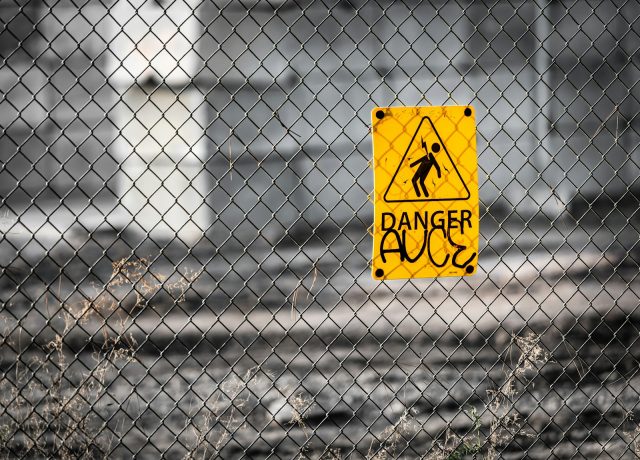
It’s easy to assume the places we visit every day are safe, like the grocery store, the coffee shop, parks, and other people’s houses. But many risks exist in routine environments and remain invisible until something goes wrong. For example, you could trip and fall in a grocery store you’ve visited thousands of times without issue. That’s why it’s smart to recognize the following hidden dangers and make small changes to protect yourself.
1. Hazardous materials and dangerous indoor air quality
Many hidden dangers are in the air or embedded in the structure of physical properties. For example, older buildings still present hazards like lead paint and asbestos. If that lead paint has been chipped or disturbed, you’ll be breathing in lead dust. For children, lead poisoning can lead to developmental delays, learning disabilities, and health problems that get worse over time. If prolonged for a period of time, asbestos exposure can cause cancer (mesothelioma) that takes decades to show up.
Other airborne risks include mold, radon, and volatile organic compounds (VOCs) from cleaning products and even furnishings. Breathing in these toxins can cause respiratory problems, allergies, asthma, and sometimes long-term disease.
Many people assume that if they can’t smell something strongly or see the mold, then it isn’t harmful. But even low-level exposure over time can do harm.
The best way to avoid toxins in the air is to test your indoor air quality. Get a radon test kit, check for mold, and make sure your ventilation works. Regardless of what you find, get an air purifier for every room in your home and run it daily.
2. Physical trip and fall hazards
Slip and trip-and-fall accidents are more common than you might think. Data from the National Safety Council (NSC) shows that more than 35 million Americans were injured in their homes in 2023, and over 125,000 accidents resulted in death.
Everything can be a hazard, including slippery floors, loose rugs, clutter, and loose handrails on stairs. This applies to homes and also stores and public places. Even just leaving a pallet of products off to the side in an aisle can cause someone to trip. Older people and children are especially vulnerable to these accidents and should be supervised at all times.
3. Poor lighting and visibility
Dim stairwells and poor lighting inside and out can cause people to step wrong, misjudge hazards, and fall. If you can’t fully see what’s in front of you, there’s a good chance there’s an accident waiting to happen.
The best way to avoid injury in poor lighting conditions is to move carefully and be aware as much as possible. If you’re walking around at night in the dark, carry a bright flashlight or headlamp.
4. Common household activities
Some hazards are connected to routine tasks like cooking and cleaning. For example, there are plenty of hazards in the kitchen, including fires, burns from the stove, and cuts. Injuries can be caused by a grease fire, hot water, scalding steam, or sharp knives in a matter of seconds.
When you’re in the kitchen, be intentional and aware at all times. Don’t turn your head while you chop vegetables, and don’t use too much tension when using a knife. Supervise kids and don’t let them reach for anything on the counter. A little awareness can go a long way in preventing injury.
5. Medication accidents
Keeping medications easily accessible is convenient, but kids can get into them and become poisoned. There’s also a chance that you’ll grab the wrong medication bottle and take the wrong dose.
The best way to avoid medication accidents is to keep all medications locked away and out of reach from kids. And look at the label each time before you take a prescription.
6. Public and outdoor spaces
Hazards are everywhere in the form of poorly maintained sidewalks, curbs, stairs, railings, and even potholes. All of these dangers can cause serious injury. Something as simple as a crack in the pavement or a puddle of water can become a hazard fast.
Playgrounds are no exception. Play equipment that doesn’t get regularly inspected can have worn-out surfaces and exposed bolts that can pose a risk to your child’s safety. Sometimes the ground itself adds to the severity of injury after a fall.
While you can’t fix a broken playground and you probably aren’t qualified to perform a thorough inspection, you can do a general check to look for major, obvious hazards. Then supervise your child the entire time they play.
Look closely
Safety hazards are everywhere, but you can avoid most of them by paying attention when you’re out in public and eliminating hazards in your home.